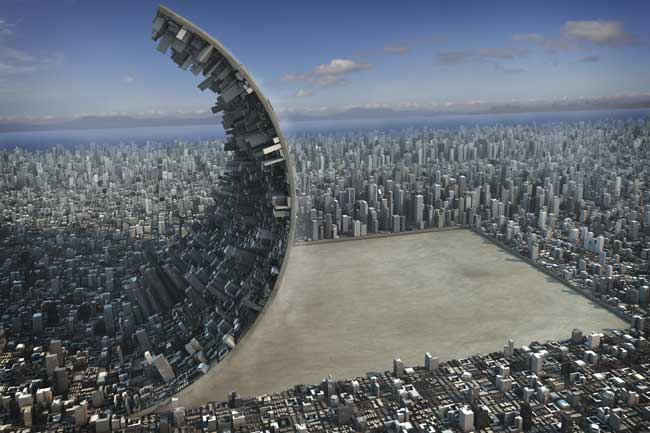Month: November 2018
Is Your City Really Moving Toward Economic Development?
Posted by Retail Attractions Blog on November 26, 2018 in Blog | No Comments
If I asked the question, “Does your city really want economic development?” you’d probably answer “yes.” It might even seem like a silly question. Doesn’t every city want to grow and develop their economy?
While most cities say they’d love to increase their revenue and develop their economy, in practice that doesn’t always seem to be the case. Cities often have trouble getting past the status quo. Here are three questions that can help you figure out why, and also help you start really moving toward economic development.

Why Resist Change?
In some cases, cities face problems that certain groups find it more profitable to complain about than to fix. To quote Aaron M. Renn, a Senior Fellow at the Manhattan Institute, “economic struggle can be a cultural unifier in a community that people tacitly want to hold onto in order to preserve civic cohesion.”
Similarly, in The Economy of Cities, Jane Jacobs says, “Economic development, whenever and wherever it occurs, is profoundly subversive of the status quo.” When people are benefiting from the status quo, there will be groups that resist change even when that change could benefit the city as a whole.
What Happened?
There are a whole host of reasons a situation like this can develop. It often happens without anyone realizing what’s going on. In many cases, you’re just too close to the situation to realize why certain groups are resisting change.
Here’s just one example. If a city were to experience economic growth, there’s a good chance outside parties will become involved. One case of this is when cities enter a public-private partnership to finance retail development. But when you bring in outside players, the people currently in power can find some of their influence diluted. In this situation, keeping with the status quo seems like it would be in their best interests.
How Can You Get Past This?
Because resistance to economic development has so many nuances and is so hard for cities to recognize, bringing in an expert can be a big help. Consulting with an economic development expert is a great way for your city to get a fresh perspective on what could be blocking economic development. Contact Retail Attractions today to see how we can help.
If you liked this article, be sure to pick up a copy of my new book The Devil’s In the Details: Things that Challenge City Government and the Language of Development. It addresses glaring problems and issues that destroy foundational economic development efforts for cities. This book also provides guidelines for how to overcome those issues. Click here to order.
5 Key Steps In The Retail Site Selection Process
Posted by Retail Attractions Blog on November 7, 2018 in Blog | No Comments
Selecting the right location to build is crucial when planning for retail expansion. The site selection process will be among the most important decisions you make, which means taking time to do things the right way is going to pay off big in the long run. Here are five key steps that will help you make the best retail site selection.

1) Analyze Data
It’s vitally important that you base your site selection on facts. To get those facts, you’ll have to analyze data related to customer demographics, trade areas, market needs, and other factors. When you’re doing this, keep in mind that concentric rings or drive times aren’t the best factors for determining who’s in your trade area. You’ll get much better data using a method that’s based on Reilly’s Law of Retail Gravitation. This is also what Retail Attractions uses.
2) Factor In Surrounding Retail
It’s not enough to know the data about customers in your trade area. You also have to consider other factors. For example, other businesses surrounding the location you’re considering can impact the kind of traffic that’s coming in. You want to be able to profit off cross-shopping traffic from neighboring retailers. You’ll also want to avoid markets that are already saturated with direct competitors.
3) Identify Optimal Sites
After figuring out which communities have a good trade area and aren’t saturated with competing retail, you can start to narrow your focus. Find out if the available sites can actually meet all your needs. Figure out traffic patterns and determine how easy it will be for customers to notice, find, and get to each location. Check out local regulations and site economics to find out if this is a profitable place to build.
4) Find A Retail-Friendly Community
Most communities would welcome an influx of retail, but the number that’s actually ready to work with retailers is much lower. Try to find a community that provides retail incentives and has the municipal infrastructure in place to support retail growth. Time-to-market (the time between acquiring a property and opening the store) directly impacts your bottom line. If a community can streamline compliance regulation and show that their transportation, water, sewage, and electrical infrastructure can handle new growth, they can easily jump to the top of your consideration list.
5) Get An Expert’s Advice
There’s a huge number of factors, including several we haven’t talked about in this post, that play a role in retail site selection. A retail expert can help keep track of all these factors, make sense of data, and ask the right questions during the site selection process. Click here to learn more about how Retail Attractions can help with site selection. If you have any questions or want to find the perfect retail site, just contact us. We hope to hear from you soon!
